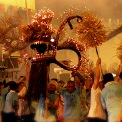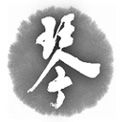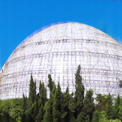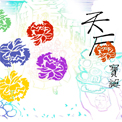 Collections
Collections The Oral Legacies (I) - Intangible Cultural Heritage of Hong Kong
The Oral Legacies (I) - Intangible Cultural Heritage of Hong Kong The Hakka Unicorn Dance in Hang Hau in Sai Kung
The Hakka Unicorn Dance in Hang Hau in Sai Kung Historical Background of the Hakka Unicorn Dance
Historical Background of the Hakka Unicorn Dance
According to the genealogy of the local residents, settlements already appeared in the coastal areas of Sai Kung as early as the 15th century of mid-Ming. With the growth of the native families and the continuous influx of immigrants, the population and villages in the Sai Kung area increased in large numbers. During the mid-18th century, there was a diasporic spread of the Hakka people from northern Guangdong to the coastal regions in the southeast. Some of them chose to settle in Hang Hau, Sai Kung, a valley in the Clear Water Bay Peninsula. These Hakka villagers formed an alliance around their ancestral halls and temples, ploughed the land for crops, and caught fish and shrimps along the coastal inlets. Others engaged in the charcoal and limekiln trades. As the villagers were often menaced by pirates, the younger generation practised martial arts and took up the responsibility of protecting their homes. The unicorn dance was one such item of martial arts practised.
As the Hakka people believe the unicorn is an auspicious animal that can ward off evil and bring good luck, it features significantly in festivities, celebrations, and religious ceremonies. Unicorn dance activities are organised around individual villages. Each village has its own unicorn dance traditions and musical features, which serve the functions of connecting members of the community and uniting members of the same clan. The unicorn dance tradition of the Hakka communities in Hang Hau, Sai Kung has been handed down the generations for over two hundred years.




